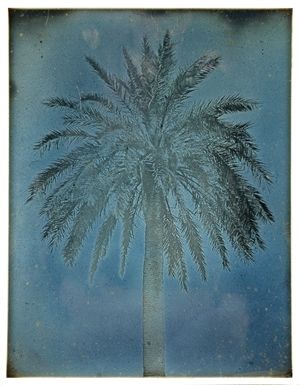#CulturedPeachy #MonumentalJourney #GiraultdePrangey @MetMuseum #WhomYouKnow Monumental Journey: The Daguerreotypes of Girault de Prangey Our Coverage Sponsored by Cosmopolitan Dental, Official Dentist of Whom You Know @GaroNazarianDDS #cosmopolitandental #loveyoursmile

The Best Dentist in Manhattan & Official Dentist of Whom You Know:
30 E. 40th Suite 1001
(212) 683-1960
Dr. Garo Nazarian is a Mover and Shaker, and was the first featured: http://www.whomyouknow.com/2009/01/movers-and-shakers-dr-garo-nazarian-of.html
Dr. Nazarian, a graduate of Boston College and Columbia Dental School, opened Cosmopolitan Dental in 2006 and has grown his practice to over 2,000 patients. Peachy Deegan is proud to be the second ever. Cosmopolitan Dental strives to surpass all patients' expectations by catering to your dental needs while providing the utmost professional results. Cosmopolitan Dental has been recognized by America's Top Dentists and has earned both the Patients' choice award and the Doctors' choice award. Dr. Garo Nazarian is a proud member of the New York State Dental Association, New York County Dental Society and the American Dental Association. Cosmopolitan Dental loves to make you smile!
***
Exhibition Dates: January 30–May 12, 2019
Exhibition Location:
The Met Fifth Avenue, Floor 2,
The Charles Z. Offin Gallery, Karen B Cohen Gallery,
and Noel Levine Gallery, Galleries 691–693
Opening January 30, 2019 at The Metropolitan Museum of Art, Monumental Journey: The Daguerreotypes of Girault de Prangey will present masterpieces of early 19th-century photography by one of its unsung pioneers. A trailblazer of the newly invented daguerreotype process, Joseph-Philibert Girault de Prangey (1804–1892) traveled throughout the Eastern Mediterranean from 1842 to 1845, producing more than one thousand daguerreotypes—the largest known extant group from this period and the earliest surviving photographs of Greece, Egypt, Syria, Lebanon, Turkey, and Jerusalem, and among the first depicting Italy. Featuring approximately 120 of his daguerreotypes, supplemented by examples of his graphic work—watercolors, paintings, and his lithographically illustrated publications—the exhibition will be the first in the United States devoted to Girault, and the first to focus on his Mediterranean journey. Many of the sites depicted have been permanently altered by urban planning, climate change, or conflict.
The exhibition is made possible by the Arête Foundation/Betsy and Ed Cohen.
Additional support is provided by Jennifer S. and Philip F. Maritz and the Alfred Stieglitz Society.
It is organized by The Metropolitan Museum of Art, New York, in collaboration with the Bibliothèque nationale de France, Paris.
Daguerreotypists in the early 1840s faced enormous technical challenges, especially in the desert, so daguerreotypes from these years are exceedingly rare. No other photographer of the period embarked on such a long excursion and successfully made a quantity of plates anywhere near Girault’s production of more than a thousand daguerreotypes. The resulting photographic campaign remains an unparalleled feat in its appearance, scope, scale, and ambition. Using an oversize, custom-made camera, he exposed more than one image on a single plate to create at least six different formats, including unexpected horizontal panoramas and narrow vertical compositions.
The fact that a collection of this size survived at all is extraordinary and attests to the achievement of an unheralded innovator working with unprecedented technology. The survival of this monumental and exemplary collection is also a result of Girault’s meticulous archival process—precocious at the time, even if today it seems commonplace. The artist stored his daguerreotypes in custom-built wood boxes; in addition, he carefully sorted, labeled, and dated the images so that he could retrieve them for future use, occasionally recording when he utilized them, for example, as the basis for a painting or published print. He also had them inventoried several times during his lifetime. In essence, he created the world’s oldest photographic archive.
“The exhibition reveals Girault as the originator of a thoroughly modern conception of photography, by which visual memories can be stored, retrieved, reassembled, and displayed,” stated Stephen C. Pinson, Curator, Department of Photographs. “At the same time, it is perhaps more important than ever to recognize that Girault was himself the product of a complex network of political, social, and historical forces that had far-reaching impact on the West’s relationship with the world he photographed.”
The exhibition presents a unique opportunity to experience these rarely seen works, as Girault never exhibited his daguerreotypes and died without direct heirs in 1892. In 1920, a distant relative, Charles de Simony, purchased Girault’s estate outside Langres, France, and discovered the photographs—labeled and carefully stored in their original wood boxes—in a storeroom of his dilapidated villa. A handful of intrepid collectors and curators were henceforth aware of the collection, but its dramatic content and scope remained little-known to the world until 2003, when the first of several auctions of material drawn from the original archive was held.
Monumental Journey: The Daguerreotypes of Girault de Prangey is curated by Stephen C. Pinson, Curator in the Department of Photographs at The Metropolitan Museum of Art.
The exhibition is accompanied by a catalogue published by The Metropolitan Museum of Art.
The catalogue is made possible by the Diane W. and James E. Burke Fund.
Girault de Prangey (French, 1804–1892), Palm Tree near the Church of Saints Theodore, Athens (89. Athènes. 1842. Palmier près S Théodore.), 1842. 9 3/8 × 7 3/8 in. (23.9 × 18.7 cm). Bibliothèque nationale de France, Paris (EG7-750)































































































